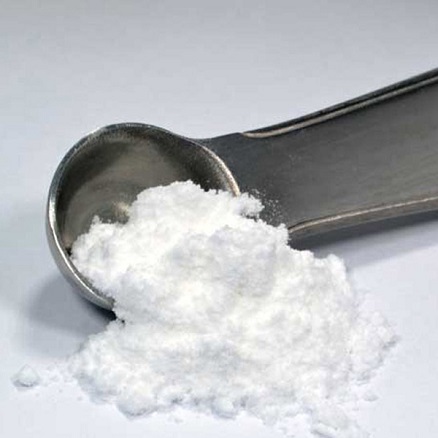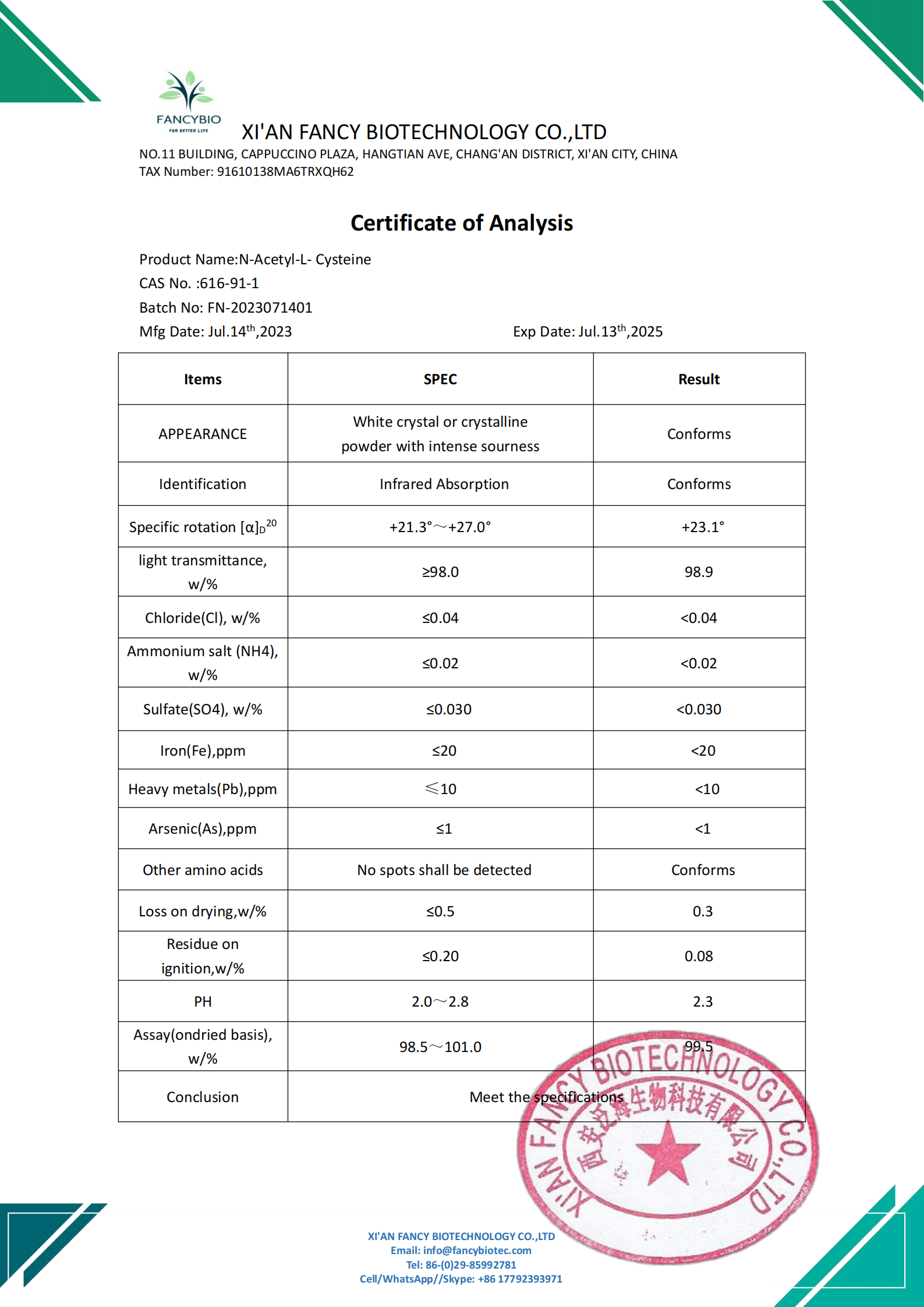La N-acetil-L-cisteína es un reactivo bioquímico y un medicamento. Este producto se utiliza como expectorante. Se dice que la flema es fácil de limpiar y la tos es fácil de calmar.


N-acetil-L-cisteína CAS #616-91-1
La N-acetil-L-cisteína es un reactivo bioquímico y un medicamento. Este producto se utiliza como expectorante. Se dice que la flema es fácil de limpiar y la tos es fácil de calmar.
Aspecto y propiedades: polvo cristalino blanco con olor a ajo y sabor agrio.
Higroscópico, soluble en agua o etanol, insoluble en éter, cloroformo. Ácido en solución acuosa (pH2-2,75 en 10g/L H2O), mp101-107!
Es el derivado N-acetilado de la cisteína, que contiene grupo sulfhidrilo en la molécula, que puede romper el enlace disulfuro (-S-S-) del enlace peptídico de la mucina, convirtiendo así la cadena de mucina en una cadena peptídica de molécula pequeña, y disminuyendo la viscosidad de la mucina, por lo que es un agente disolvente para flema mucosa, flema purulenta y moco del tracto respiratorio.
Uso: Utilizado en medicina como fármaco solubilizante de flema mucosa: Utilizado en la investigación bioquímica, utilizado en medicina como fármaco solubilizante de flema mucosa y antídoto para la intoxicación por paracetamol. Uso tres como fármaco disolvente de flema mucosa. Adecuado para la obstrucción respiratoria causada por la obstrucción de gran cantidad de flema mucosa. Además, también se puede utilizar para la desintoxicación de la intoxicación por paracetamol. Debido a su olor especial, es fácil que provoque náuseas y vómitos. Tiene un efecto irritante en las vías respiratorias y puede causar broncoespasmo, generalmente se utiliza en combinación con isoproterenol y otros broncodilatadores, junto con aspirador de esputo para expulsar el esputo. No es adecuado para el contacto con metales (por ejemplo, Fe, Cu), caucho y agentes oxidantes. No debe utilizarse junto con fármacos antibióticos como penicilina, cefalosporina, tetraciclina, etc., para no reducir su
Utiliza cuatro reactivos bioquímicos, la medicina, el producto se utiliza como un expectorante, llamado flema fácil de limpiar, fácil de tos tranquila. Tiene un efecto de descomposición de la flema viscosa. El mecanismo de acción es que el grupo sulfhidrilo contenido en la estructura molecular del producto puede romper el enlace disulfuro en la cadena polipeptídica de la mucina en la flema mucosa, de modo que la mucina se descompone, disminuyendo la viscosidad de la flema, haciéndola licuada y fácil de toser. Es adecuado para enfermedades respiratorias agudas y crónicas en las que el esputo es espeso y no es fácil de expulsar al toser, así como para los síntomas críticos en los que una gran cantidad de flema mucosa está obstruida y causa dificultad en la succión.
Uso: Reactivo antioxidante y mucopolisacárido. Se ha descrito que previene la apoptosis neuronal, pero induce la apoptosis en células musculares lisas y previene la replicación del VIH. Puede ser un sustrato para la glutatión transferasa microsomal.

Our professional sales team are waiting for your consultation.